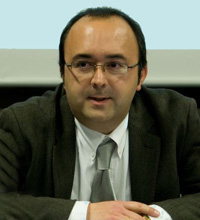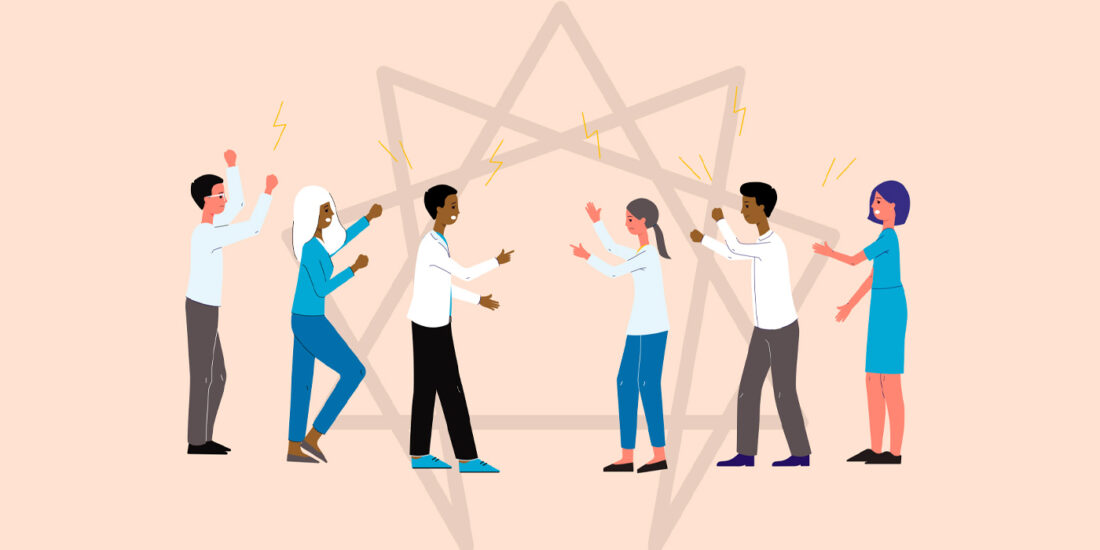The Systemic Perspective at the Family Enterprise Field
In this brief article, I will quickly talk about the systemic perspective and cover some frequent dynamics that we find at family enterprises, while trying to give recommendations for professionals working with those types of enterprises.
The unconscious laws behind the systemic approach
Hellinger’s systemic psychotherapy (commonly known as “Constellations”) was a major contribution to understanding and solving human common, and not so common, personal problems. In this body of knowledge, the family into which any person is born strongly conforms that person’s character and unconscious behavior patterns, far deeper than society, education, or any incident at the adult phase. In this model, there are mainly three unconscious group laws, at every person’s brain, helping us understand and solve existing personal problems.
Later on, Hellinger developed a particularization of these three laws for understanding and addressing what happens at organizations. Here, the group laws are somehow different. Later on, various authors developed three additional laws, which can be seen as particularizations of the main three ones. I work with a seven-law model.
Finally, family enterprises can be seen as the cornerstone of these models, since they mix (and often mess up) both group systems, with their different group laws: the family of origin one, and the organizational one. At family enterprises, we have the joining of usual systemic entanglements at any enterprise with those of the family dynamics.
No wonder that family enterprises are often those gathering the largest and most complex amount of systemic entanglements, leading to both human conflicts and suffering on the one hand, and to negative impacts on business throughput, and even continuity, on the other.
The differentiating factors of family enterprises
From the systemic point of view, the main priority of organizations is to survive. Usually, business schools teach that, for example, for private companies profit is the main priority and not survival. This may very well be the case for company owners, but from the systemic point of view, organizations have their own life and this makes them try to survive at any cost.
However, at family enterprises the hidden unconscious mission of such enterprises is usually not just profit. It varies from enterprise to enterprise, but we can find:
- Family enterprises where the hidden mission is to employ family members.
- Family enterprises where the hidden mission is to continue the legacy of the founder. Here, out of love for the founding ancestor, usually the progeny strive to maintain or even enlarge the enterprise, not focusing so much on profit or even on their own well-being.
- Others
Here I need to stress that at a family enterprise the word “family” has a stronger weight than the word “enterprise.” This explains many decisions which from a purely business management perspective would seem illogical.
The most common problems at family enterprises
Most common problems at these enterprises usually come from owners and managing family members who cannot separate their role as a family member from their role at the enterprise.
For example, if in a certain family enterprise, the younger son, has a hierarchically superior position to his older brother; tensions will always exist, in a more or less evident way. Hence, conflicts damaging the business are very likely to happen. In addition, we could broadly speak about problems between parent(s) and siblings at the enterprise and what happens when parent(s) wish to retire.
Continuing with the stated younger/older brother example, the solution is the same for most family enterprise situations: for every family member to accept and distinguish that when he or she enters the door of the enterprise, he or she has a certain hierarchic level (together with associated responsibilities and duties), and hence, for example, smoothly accepts orders from his/her younger brother. Thereafter, when every day he goes back home, he is the older brother at the family level, and therefore should be treated as such. Let us see a case example:
Case
- The client: European middle size family enterprise
- The issue: Constant conflicts appear between the general manager, who happens to be the younger sister, and her two older sisters, hierarchically below her.
- Solution: Working with the client, they could see that the root cause is mixing personal and professional issues.
- The older sisters see the general manager as “their younger sister,” and this creates jealousy, lack of respect, susceptibility, and tensions, taking valuable energy away from their daily lives and causing personal discomfort. Obviously, they state other problems, used as excuses, but when working with them they could discover the root underneath.
- The older sisters were able to experiment on how they would feel if they were able to accept and respect the leadership of their younger sister, and how this would positively affect their job and the company’s results.
If a sibling is the one at the enterprise with a hierarchically superior role to the founding parent, the situation and/or the enterprise is, in the vast majority of cases, at a serious risk. Here is another case example:
Case
- The client: General manager at a large family-run industry, producing and distributing agriculture commodities, on the American continent. He has been in this position for two years and a half.
- The issue: Company results for the last two years are weak. Furthermore, there are constant conflicts between the general manager and his two brothers, hierarchically below.
- Solution: Investigating, it turned out that the current general manager’s father (the founder) did not allow him to enter the company. Hence, he bought more and more shares, until reaching 51% and then took the control, putting aside his father.
- Working with the GM he could realize the best way to improve company results and solve the problems with his brothers: leaving the GM position, which he had taken more out of revenge and for personal reasons, rather than for business ones. Then he would remain the main stockholder, enjoying the growing benefit that his father and his brothers would achieve.
- Finally, he ended up confessing being tired and worn out by so much family tension and so much fighting, without results for increasing the company’s outcomes.
- He also ended up realizing, at another session that he would be happier starting another project outside this company.
- Comments: This GM made such a serious violation of a systemic law, by “stealing” the company from his father that no company could work with him in command. I did not tell this to the client, I simply helped him discover and experiment with what was best for him and his company. This is a less confrontational way of achieving the best solution for the client and his company.
When working with family enterprises, take into account that:
- Systemic dynamics are unconscious and strongly pulling both family and the organization’s individuals. This is done both by family systemic dynamics and by organizational ones.
- They are behind most of the bizarre, or illogic behaviors at family enterprises. So when you come across those, consider calling a systemic professional.
- Systemic dynamics are beyond cultural perspectives, customs, regional perspectives or values. The same entanglements consistently occur across regions, nations, cultures, family types. Systemic dynamics have been measured and validated around the globe (for example, the international association EURASYC, which I chair, has members at 25 countries, across four continents). We are all equal at the systemic level, despite the fact that we like feeling different or unique.
Case
- The client: General manager of a middle size family-run business on the American continent.
- The issue: Since the government took away the public concession for a certain exploitation, they have spent years at the courts, against the government, and have been in an internal state of chaos and frustration. The concession was at the family for decades.
- Solution: Working with the client, he could finally understand that a government has hierarchically all the right to give or take a concession, independent of how many decades it had been given to the family.
- The current GM felt, deep inside, he could not loose grandfather’s legacy (with a combination of shame and misunderstood love and respect for the passed away grandfather). Hence, the family had, from an emotional reaction, entered into a very long and costly legal process that was obviously not succeeding. What is even worse is that this process was making them lose a valuable amount of energy, which could be used to fresh start another project, which could ensure their future.
- It is like a two-year-old’s temper tantrum, because “they” have closed “your” door, and you keep on beating this door. The person cannot see that there are other doors out there.
About the contributor:
 Oscar R. Peña is the president of the largest association on organizational constellations, The European Association on Systemic Consultancy (www.eurasyc.eu). Author of two books, he currently combines his practice as a coach, with training systemic coaches around the globe, including trainings at business schools, universities, and private trainings. Oscar is the official (main) coach of the EU FRA Agency, and is recognized as senior consultant by another 21 European Union agencies. Oscar can be reached at info@eurasyc.eu.
Oscar R. Peña is the president of the largest association on organizational constellations, The European Association on Systemic Consultancy (www.eurasyc.eu). Author of two books, he currently combines his practice as a coach, with training systemic coaches around the globe, including trainings at business schools, universities, and private trainings. Oscar is the official (main) coach of the EU FRA Agency, and is recognized as senior consultant by another 21 European Union agencies. Oscar can be reached at info@eurasyc.eu.




